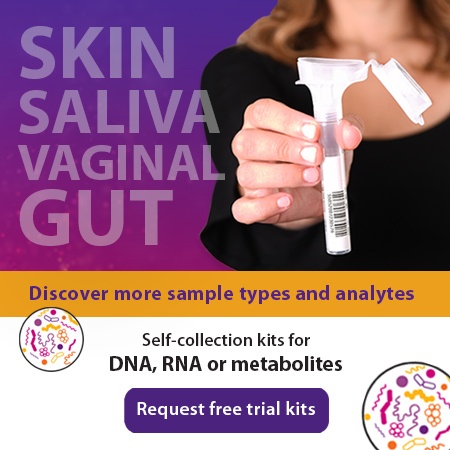2019-06-14
Throughout our cold chain stool sample collection series we explored the challenges, high cost, and low quality results that often come with shipping stool samples via cold chain. In our third and final blog of this series, we explore how to identify which stool sample collection protocol is optimal for human microbiome analyses.
Trying before buying
Would you purchase a new car without first taking it for a test drive? Likely not. Similarly, those involved in human microbiome research often conduct a small validation pilot to confirm the optimal protocols for their project. The information required to confidently select the stool sample collection protocol that is optimal for a microbiome research project should be based on how well the protocol performs on the following metrics:
- Stool sample neutrality, stability & reproducibility
- is each aliquot from the same sample indistinguishable from a freshly collected and immediately processed sample, regardless of elapsed time and environmental stressors?
- Yield quantity & quality
- Donor experience & compliance
- Scalability: from pilot to population
Let’s explore 7 critical considerations every microbiome researcher should consider when selecting the stool sample collection protocol for their project.
1. Recruitment – collect from donors that are comparable to your target cohort
Test drive your vehicle on the terrain you plan to drive it on.
The same goes for your stool sample collection protocol. Studies have shown that collecting from experienced donors in controlled environments yields significantly different results than collecting from naïve donors in the field. Likewise, we know there are many factors that impact microbial DNA yield from stool – from age and health of donors, to medications and diet. For example, liquid stool provides a much lower yield than solid stool. [1] [2]
Your validation study should therefore collect samples from a comparable cohort to your main study – both in terms of who is providing the sample, and where they’re collecting it (i.e. at home vs. in clinic).
2. Stability – assess the journey from donor to lab
Can the vehicle in question handle not just your daily journey, but your journey across extreme weather conditions?
Similarly, will your protocol maintain sample stability in the most extreme environmental stressors that they could potentially be exposed to? For example, if your donors are collecting samples at home and mailing them back to you, your validation study should test stability in extreme shipping environments. We know that taxonomic change due to transport is donor dependent and unpredictable, and we also know that stability in extreme temperatures varies significantly between protocols. When shipped, samples may be exposed to temperatures from -20°C to +50°C. Validating stability at these extreme temperatures, including freeze-thaw cycles, is critical. [3]
3. Homogeneity – extract and sequence aliquots from the same sample multiple times
Test drive your vehicle of interest several times before purchasing, in varied weather and road conditions.
Likewise, you’ll want to test multiple aliquots from the same stool sample to ensure they’re comparable. We call this homogeneity. To determine if a sample is homogenous we recommend aliquoting, extracting and sequencing at least 3 times from the same sample and comparing the results.
4. Neutrality – compare against a freshly collected & immediately processed (or flash frozen at -80⁰C) sample
Test driving a previously owned vehicle without comparing it to a brand new version of the same vehicle might leave you dissatisfied with the performance.
Similarly, without comparing your stool sample to a freshly collected and immediately processed (or flash frozen at -80⁰C) sample, you may be unaware that bias has been introduced. This is a metric we call neutrality – how well a sample provides a snapshot of the in vivo state at the point of collection. And though neutrality is critical for microbiome studies, most validation studies fail to assess it.
With a number of sample protocols, this bias is introduced in the short time frame between when the sample is collected, and when it is considered to be stabilized (for example the time it takes an FOBT or FTA card to dry, or a sample to freeze in a standard home freezer). If you assess the stability of these "stabilized" samples, even if you're comparing them over time and across environmental stressors, you'd potentially be missing poor performance on the neutrality metric - in short, these samples may have stabilized a biased sample.
5. Donor experience
Previous experience with brands of vehicles may impact whether or not you always purchase the same make of vehicle.
The donor experience for any given sample collection protocol has a significant impact on rates of compliance – especially for studies that require collections from the same donor at multiple time points. We also know that if the first stool sample collection experience is positive, it increases compliance for not only the first collection, but every one thereafter. The more variables that need to be controlled when collecting a sample, the higher the burden on the donor. Therefore the burden (number of variables needing to be controlled to ensure a stable sample is collected) and the overall experience need to be taken into consideration to maximize compliance rates.
In considering the cost-benefit of a collection protocol, the cost of low compliance rates cannot be ignored – they ultimately lead to higher overall study costs if a certain number of samples need to be re-collected to properly power the study. [4]
6. Scalability & yield (quantity and quality)
You’re purchasing this new vehicle as a grad student – will it continue to meet your needs as your life circumstances change (i.e. start a career, have children)?
 Similarly, it’s important to consider whether or not the sample collection protocol in your validation study gives you the option of scaling up to a much larger, multiomics study in the future.
Similarly, it’s important to consider whether or not the sample collection protocol in your validation study gives you the option of scaling up to a much larger, multiomics study in the future.
Yield is critically important for human microbiome studies, especially for projects hoping to do deep sequencing now or in the future. The deeper you sequence, and the more samples you sequence, the higher the likelihood you’ll be able to assess this metric, and thus allow you to determine which protocol is most appropriate to ’future proof’ your samples.
Another consideration, often forgotten in the early stages, is how well the sample collection protocol lends to high-throughput automation in the lab. How samples need to be handled in the lab impacts processing time and costs, and should be taken into consideration when conducting cost-benefit analyses of protocols. [1] [2] [3]
7. All performance metrics – collect and collate available data.
Properly conducting a validation study to compare stool sample collection protocols is not as simple as you might have thought. Just as you would likely read reviews from others who have purchased the same vehicle, consider taking advantage of the fact that others have already done a lot of this validation work for you. There is readily available data comparing stool sample collection protocols. Take a look at what manufacturers offer, the numerous peer reviewed articles that have been published, and discuss with colleagues and collaborators.
Just remember - unless the sample was tested against a freshly collected and immediately processed ( or immediately flash frozen at -80°C), from comparable donors, and the sample travelled a similar journey from collection to the lab, and was processed at the depth you're hoping for, then the data is not going to help in the decision-making for your study.
Conclusion
To effectively capture a ‘snapshot’ of the in vivo state at the point of collection, all aliquots from the same stool sample should not differ significantly from a freshly collected, immediately processed sample (or flash frozen at -80⁰C) – regardless of where (or who) the sample was collected from and what journey it took to the lab. And let’s not forget about yield or the donor experience.
When comparing costs and benefits of protocols, make a concerted effort to avoid considering them in isolation. Wastage from poor compliance, as well as the burden of processing samples in the lab need to be considered to determine how the sample collection protocols may impact overall study costs.
As experts in the field of sample collection for microbiome analysis, DNA Genotek can support you in determining the optimal stool sample collection protocol for your project, from study design, through to analysis and analytics. Our overarching goal is to minimize bias in microbiome research – which means supporting your efforts to try before you buy. We’re here to help.

For more information on our OMNIgene·GUT microbiome collection devices or to request free evaluation kits, please do not hesitate to contact us at info@dnagenotek.com.
Links to other blogs in this series
Cold chain stool sample collection - as series of unfortunate events part 1 of 3
Cold chain stool sample collection - as series of unfortunate events part 2 of 3
References
[1] Song et al. Preservation methods differ in fecal microbiome stability, affecting suitability for field studies. mSystems. 1(3): e00021-26 (2016).
[2] Amato, K. An introduction to microbiome analysis for human biology applications. Am J Hum Biol. 29 (1). DOI: 10.1002/ajhb.22931 (2017).
[3] https://www.dnagenotek.com/ROW/pdf/PD-WP-00056.pdf
[4] Abrahamson et al. Successful collection of stool samples for microbiome analyses from a large community-based population of elderly men. Contemp Cl Tri Comm. 7:158-167 (2017).


